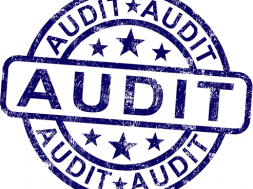
How Does the Tax Cuts and Jobs Act Affect You?
By Michael C. Rager, CPA, Manager, McClintock & Associates, PC
Since some of the staff in our office weren’t even born when Reagan signed the 1986 tax bill, we believe that it is fair to say the Tax Cuts and Jobs Act signed on Dec. 22, 2017, by President Trump was long overdue. It represents the largest overhaul of the Internal Revenue Code since 1986. It affects virtually every taxpayer, both businesses and individuals, in some way. The following are some of the items that may have an effect on the businesses, owners and individuals in the education sector.
Significant items for businesses and pass-through entity owners
Businesses will see a reduction in corporate tax rates, increase in bonus depreciation allowance, enhancement of the Code Sec. 179 expense, and repeal of the alternative minimum tax. Owners of partnerships, S corporations and sole proprietorships are allowed a temporary deduction as a percentage of qualified income of pass-through entities, subject to a number of limitations and qualifications. However, there was also the elimination of several business tax preference items.
Corporate tax rates and alternative minimum tax
Under the previous tax law, corporations determined their annual income tax liability by applying a graduated rate of tax to their taxable income. The top rate being 35 percent for taxable income in excess of $10 million.
In addition, if a corporation had a net capital gain for any tax year, the corporation would be subject to an alternative tax if it was less than the tax computed in the regular manner.
Under this alternative tax, the portion of the corporation’s taxable income that was net capital gain was subject to a maximum tax rate of 35 percent. For tax years beginning after Dec. 31, 2017, the new, permanent 21-percent flat rate takes effect, replacing the previous graduated rate structure, and the alternative minimum tax (AMT) for corporations is repealed. With the repeal of the AMT, any unused minimum tax credit of a corporation may be used to offset the regular tax liability for any given year. In addition, a portion of the unused minimum tax credit is refundable in 2018 through 2021, subject to limitations.
- Takeaway – This should lower taxes for the majority of institutions.
Bonus depreciation
The first-year depreciation allowance is increased to 100 percent for property placed in service after Sept. 27, 2017, and before Jan. 1, 2023 (Jan. 1, 2024, for longer production period property and certain aircraft). The requirement that the original use of qualified property begin with the taxpayer has been removed. Therefore, the additional first-year depreciation deduction is allowed for new and used property.
- Takeaway – Greater flexibility to the bonus depreciation rules will allow institutions an ability to reduce their taxable income without the restrictions of the Code Section 179 rules.
Code Sec. 179
The Code Sec. 179 maximum expense amount has been increased to $1 million, and the phase-out threshold to $2.5 million for tax years beginning after Dec. 31, 2017. These amounts will also be indexed for inflation. The definition of qualified real property under Code Sec. 179 has been expanded to include improvements to nonresidential real property placed in service after the date such property was first placed in service: roofs, heating, ventilation and air conditioning property; fire protection and alarm systems; security systems.
- Takeaway – Institutions are now able to take further advantage of purchases by fully deducting property additions/replacements that were previously subject to long-lived depreciation cost recovery methods.
Net operating losses
Net operating losses (NOLs) arising in tax years beginning after 2017 may only reduce 80 percent of a taxpayer’s taxable income in carryback and carryforward years. The carryback period for NOLs arising in tax years ending after 2017, has been eliminated, however they may be carried forward indefinitely, whereas they were previously limited to 20 years.
- Takeaway – The short-term effect of removing a carryback option could be detrimental to those institutions incurring losses in the next couple of years. Additionally, by limiting the NOL usage to 80 percent on a go forward basis, the Act has created a “revised AMT” method of taxing the institutions.
Pass-through income
For owners of partnerships, S corporations and sole proprietorships (pass-through entities), a Code Sec. 199A deduction applies for tax years from 2018 through 2025. Noncorporate taxpayers may deduct up to 20 percent of domestic qualified business income from the pass-through entity. There is a calculation to determine the amount of deduction allowed, with a phase in and phase out amounts. Also, certain service trades or businesses are not allowed a deduction. The Code Sec.199A deduction is not an itemized deduction, therefore it is available to individuals who itemize deductions and to those who claim the standard deduction. The deduction amount cannot be more than the taxpayer’s taxable income (reduced by net capital gain) for the tax year.
- Takeaway – The Code Sec. 199A deduction is not a straightforward calculation and may not be a benefit to as many taxpayers as it may have initially seemed, but is a planning opportunity for those that will qualify for the deduction.
Limit on excess business losses for noncorporate taxpayers
The excess business losses of noncorporate taxpayers are not allowed for tax years beginning after Dec. 31, 2017, and before Jan. 1, 2026. Any excess business loss that is disallowed is treated as a net operating loss (NOL) carryover to the following tax year. Note that passive activity loss rules apply before application of the rules for excess business losses. For partnerships and S corporations, the limit on excess business losses is applied at the partner or shareholder level, with a maximum of a $250,000 loss allowed.
- Takeaway – The result of this is that an individual taxpayer is limited to offsetting a maximum of $250,000 of business loss against other income for the tax year and any additional loss will be carried forward as an NOL.
Significant items for individuals
Individuals are more impacted by the provisions of the Tax Cuts and Jobs Act than any other class of taxpayer. Reduction in effective tax rates, elimination of some deductions, exclusions and credits while others are enhanced. Two items that directly affect students are related to qualified tuition programs and student loans.
Individual tax rates
Individual income tax rates for 2017 ranged from 10 percent to 39.6 percent. Beginning for tax years after Dec. 31, 2017, and before Jan. 1, 2026, rates will range from 10 percent to 37 percent with the bracket thresholds adjusted annually, after Dec. 31, 2018, for inflation.
- Takeaway – Individuals will benefit from the lower tax rates.
Personal exemptions, standard deduction and itemized deductions
Under the Tax Cuts and Job Act, personal exemptions are repealed for tax years 2018 through 2025. Instead, the standard deduction amounts for individuals are temporarily increased for the same period. The amounts for 2018 are $24,000 for married filing jointly, $18,000 for head of household, and $12,000 for single and married filing separately. The increased amounts will be indexed for inflation for tax years after 2018 and before 2026.
Some important changes to itemized deductions are the limiting of nonbusiness state and local taxes, including property taxes, to $10,000 for 2018 through 2025.
Also, the elimination of all miscellaneous itemized deductions that are subject to the two-percent floor, for the same period. This increase in the standard deduction along with the elimination and limitation of certain itemized deductions will cause fewer taxpayers to qualify for the itemized deduction and therefore utilize the standard deduction. An unknown consequence of this will be the effect on charitable giving by taxpayers who will no longer qualify for itemized deductions and the organizations that solicit them.
- Takeaway – The increased standard deduction lowers taxable income. However, the elimination of the personal exemptions and changes to itemized deductions will negatively affect taxpayers.
Qualified tuition programs (529 Plans)
The Tax Cuts and Jobs Act expands qualified distributions made after Dec. 31, 2017, from tuition, required fees, books and supplies, to also include not more than $10,000 in expenses for tuition during the tax year in connection with enrollment or attendance of the designated beneficiary at a public, private or religious elementary or secondary school.
- Takeaway – Individuals will have more flexibility in utilizing funds in a Section 529 plan.
Discharge of student loans
Certain eligible loans, discharged after and amounts received after, Dec. 31, 2017, and before Jan. 1, 2016, are excludable from gross income if the discharge was pursuant to the death or total and permanent disability of the student.
- Takeaway – This will lower taxable income in these situations.
Private colleges and universities
A new Internal Revenue Code section (Code Sec. 4968) imposes a 1.4 percent tax on net investment income of certain private colleges and universities in each tax year beginning after Dec. 31, 2017. The tax is imposed on “applicable educational institutions,” defined as eligible institutions that:
- Have at least 500 students during the preceding tax year, of which more than 50 percent are located in the United States,
- Are private educational institutions and not state colleges and universities described in Code Se. 511(a)(2)(B), and
- Have assets with an aggregate fair value of at least $500,000 per student (not including assets used directly in carrying out the institution’s exempt purpose) as measured at the end of the preceding tax year.
For these purposes, the number of students of an institution is based on the daily average number of full-time students attending the institution, with part-time students being taken into account on a full-time student equivalent basis.
The assets and net investment income of any related organization are treated as assets and net investment income of the applicable educational institution. Related organizations include any organization that:
- Controls, or is controlled by, an applicable institution;
- Is controlled by one or more persons who also control that educational institution; or
- Is either a supported organization (as described in Code Sec. 509(f)(3) or an organization described in Code Sec. 509(a)(3) in regard to the educational institution during the tax year.
- Takeaway – This will be a new tax on these institutions.
Tax-exempt organizations with unrelated business taxable income
The unrelated business income tax (UBIT) generally applies to income derived from a trade or business regularly carried on by an exempt organization that is not substantially related to the performance of the organization’s tax-exempt functions. Under the Tax Cuts and Jobs Act, for organizations with more than one unrelated trade or business, the UBIT is first computed separately for each trade or business without regard to the specific deduction generally allowed. Any loss from one unrelated trade or business cannot be used to offset income from a different unrelated trade or business. Generally, an organization can use a deduction from one tax year to offset income from the same unrelated trade or business in another tax year.
- Takeaway – This will increase UBTI tax for these institutions.
Conclusion
The Tax Cuts and Job Act is wide sweeping and although many items were mentioned here, there are plenty of other items that were not, that could affect you or your business’s tax situation. As significant of a change as this was, the tax laws are continually changing. It is recommended that you consult a tax advisor to assess your specific tax situation to be certain how these and other tax law changes affect you.
MICHAEL RAGER is a Certified Public Accountant who has over 25 years of professional experience in public accounting and is a Tax Manager at McClintock & Associates, P.C. Mike provides clients with a full range of individual and business tax consulting services. Prior to joining McClintock & Associates, P.C., Mike has worked at local, regional and national public accounting firms, working with a variety of clients in the private, non-profit and, government sectors from various industries.
Contact Information: Michael C. Rager, CPA // Manager // McClintock & Associates, P.C. // 412-257-5980 // mrager@mcclintockcpa.com // www.linkedin.com/in/michaelrager // https://www.mcclintockcpa.com









